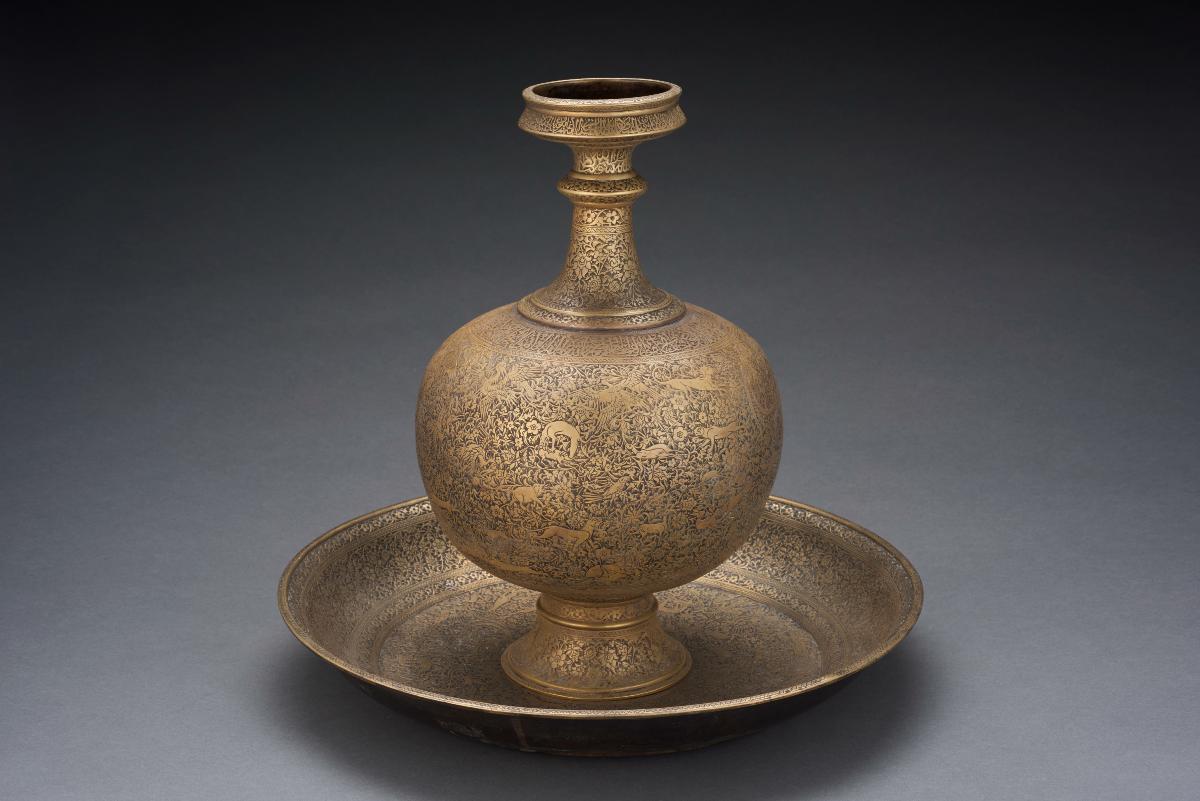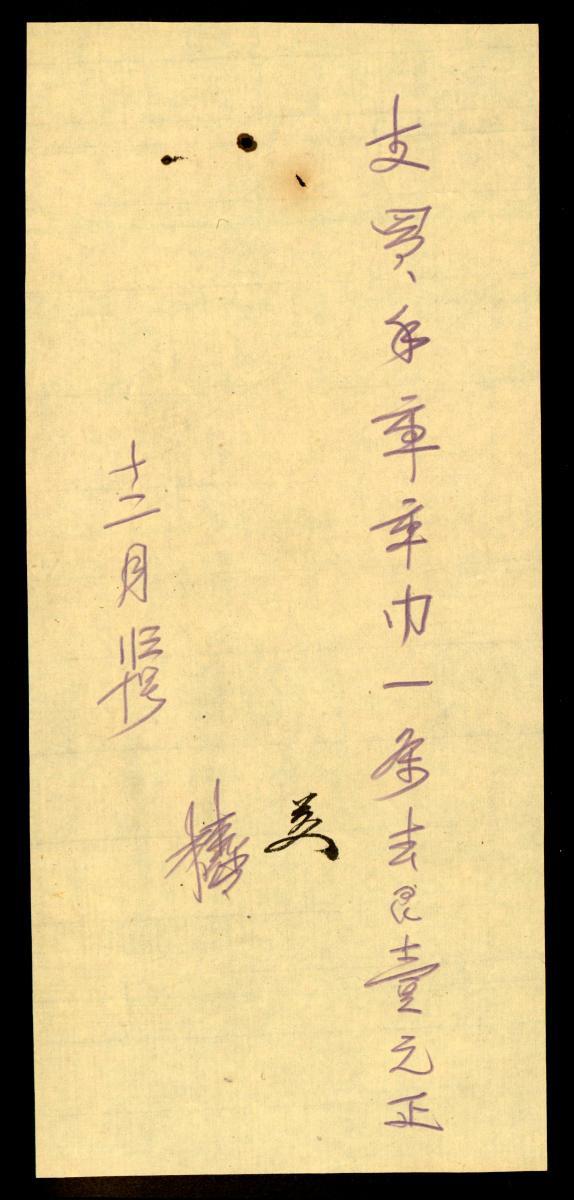Exquisite metalwork represents one of the more significant artistic traditions of the Muslim sultanates along the Deccan plateau in southern India, that emerged at the end of the 15th century. Owing to either descent from Persian adncestors or belief in the Shi’i faith, the Deccani courts showed an affinity with Persian artistic traditions and influences. The animal decorations on both the ewer and the salver allude to this Persian reference with the inclusion of mythical beasts such as senmurv, yali and dragons, with other animals such as elephants and hares. These motifs are set against a detailed foliate ground on the ewer. A hamsa, an aquatic bird with symbolic meaning derived from the Hindu tradition, is depicted on the centre of the salverr. The presence of Hindu and Persian elements reaffirms the association with the Deccani sultanates while the inscription bands in Arabic script bear verses from the Quran, surat al-Baqarah (Chapter 2: ‘The Heifer’) found mainly on the neck and rims of the ewer underscore the Muslim context.















